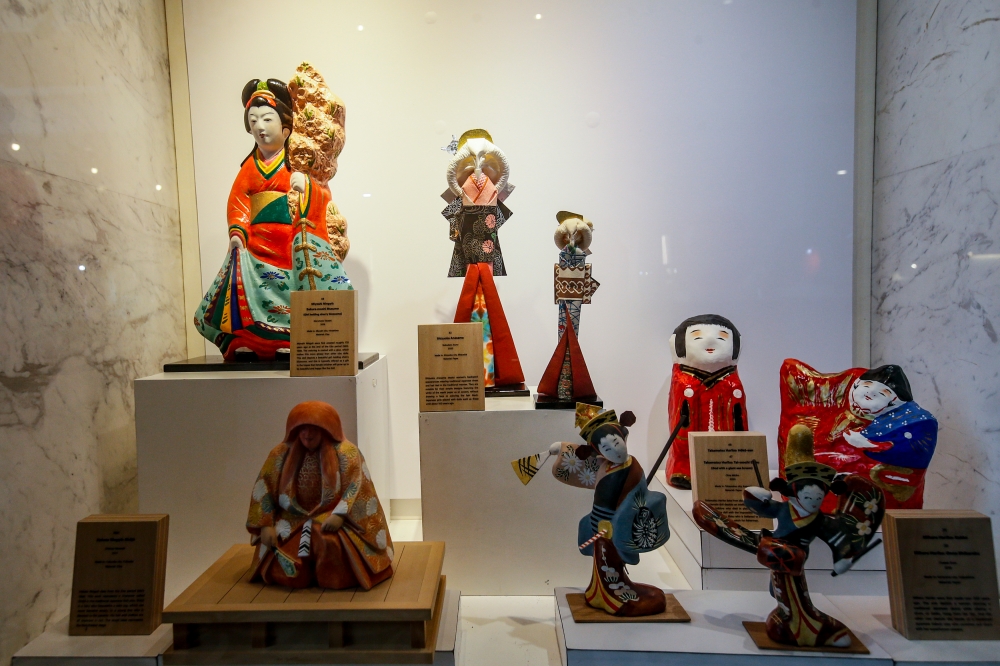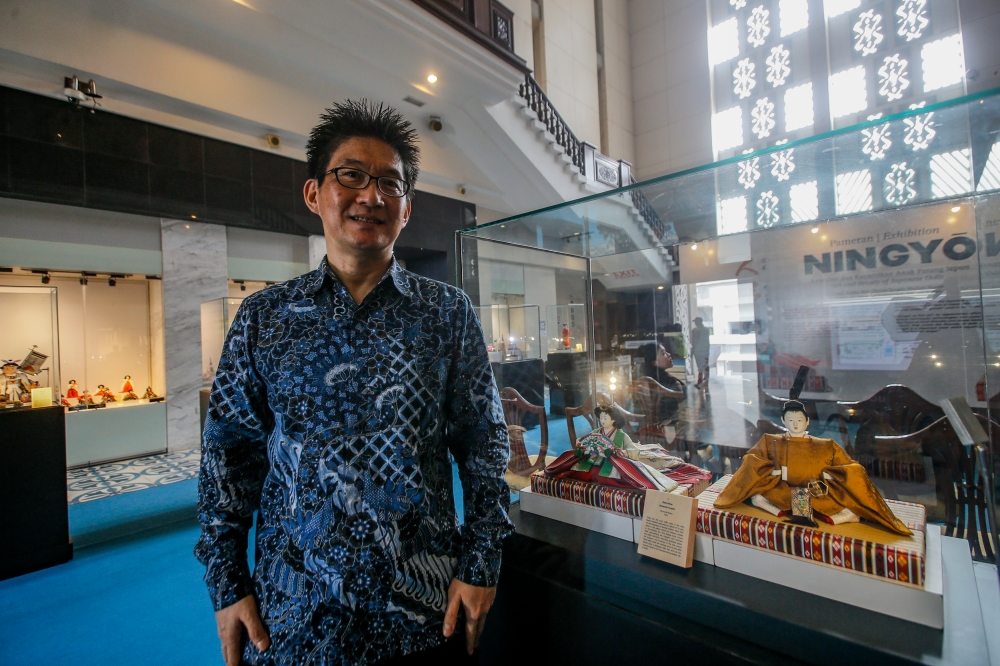KUALA LUMPUR, May 8 — Muzium Negara will be hosting a special exhibition on the uniqueness of Japanese dolls also known as the Ningyo until July 8.
The Ningyo: Art and Beauty of Japanese Dolls exhibition features a total of 67 Japanese dolls in four curated sections where visitors can learn about the rich history of Ningyo which has been part of Japanese culture since the seventh century.
This includes sections on Ningyo being used as a means to pray for children’s growth, its fine artistry, the folklores behind the dolls as well as the spread of Ningyo culture.
Today, the Ningyo still holds a significant value in Japanese culture especially during the Hina Matsuri festival (girls festival) every March 3 where the Hina Ningyo will be displayed in homes and temples to pray for the happiness and protection of girls.
The display setup includes the Dairi-bina which is meant to represent the Emperor and Empress from the Edo period (1603-1868) on the top followed by Sannin-kanjo (their three female servants) and the five musicians dolls known as Gonin-bayashi.

Visitors can also explore the folklore behind some of the dolls such as the Momotaro, a hero born from a peach and fought his way to the island of Ogres in order to retrieve stolen treasures.
The exhibition is organised by the Japan Foundation Kuala Lumpur (JFKL) with co-organisers including the Department of Museums Malaysia, the National Unity Ministry as well as the Japan embassy in Malaysia.
This is also in celebration of 67 years of diplomatic ties between Malaysia and Japan.

JFKL director Tsukamoto Norihisa said that despite the dolls being relatively newly made, it was carefully selected for the exhibition to perfectly showcase their century-long culture.
The exhibition was previously held in Bangladesh and will be heading to India after Malaysia.
Muzium Negara will also be hosting a special Japanese Cultural Day on June 1 which will offer visitors a slew of programmes including workshops, demonstrations and competitions relating to Japanese culture.






















